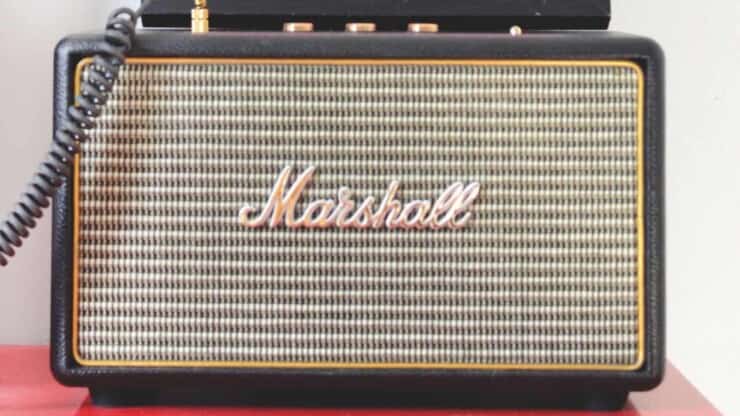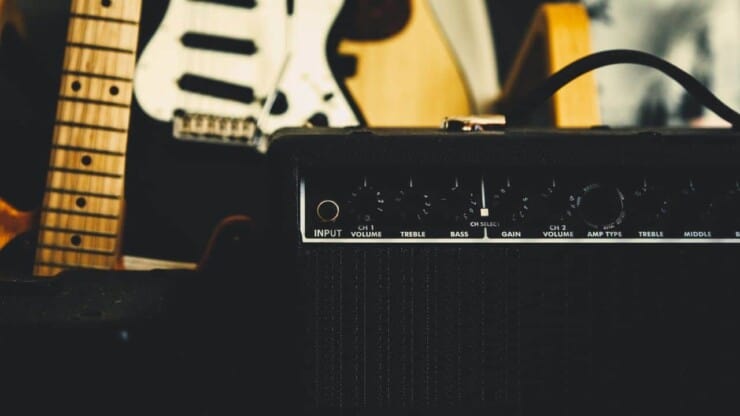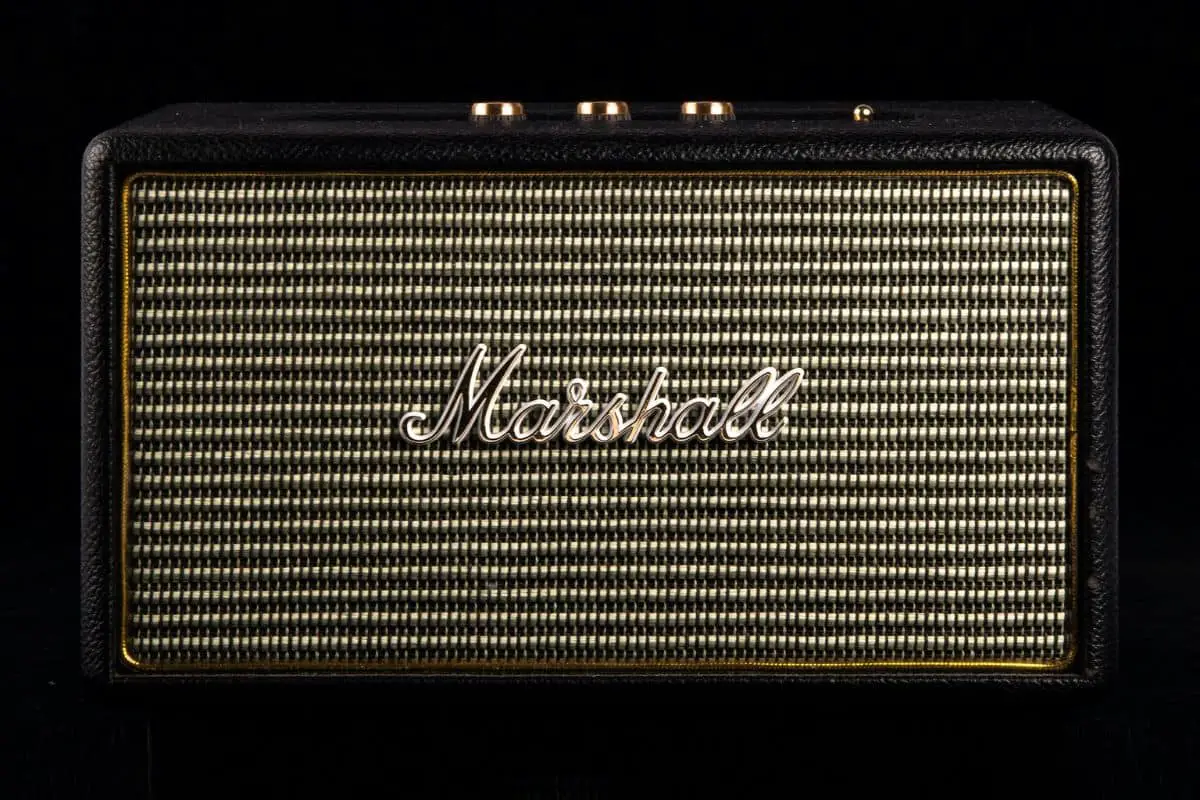Are you looking for information about how many watts does a guitar amp use and does it consume more electricity than your pocket can afford? If so, then you’re definitely in the right place.
The watts a guitar amp uses will depend on the type of amp you’re using. For instance, beginner and practice amps use 10-20 watts. Meanwhile, tube-amps use 40 watts while solid-state amps use 100 watts.
In this article, you’ll get to know all about amplifiers and electricity consumption, how many watts does a guitar amp use, different types of amps and how much power does a guitar amp use, and more. Continue reading to get all the answers you’re looking for.
How many watts does a guitar amp use?
The average wattage consumption per hour of an amp is 100-200 watts. To put it into perspective, amps use a similar amount of electricity as a refrigerator. It is a bit more than lights on the ceiling and 10x less than standard air conditioners. Although 100-200W is the average consumption of a guitar amp, the answer isn’t as straightforward as it seems. With so many brands and amp types available on the market, each one boasting different inner components and features, it’ll be important to consider the variables. The different variables will establish whether amps use a lot of electricity.
Amplifiers and electricity consumption
As mentioned before, the average amount of electricity consumed by a guitar amp falls between 100-200W per hour. This number is a rough estimate of different types of amps of all shapes, sizes, models, and makes. Therefore, it’ll be accurate only as a broad guideline. In reality, many amps might use significantly more or less electricity than the average amount. The electricity that an amp uses will depend on several factors. The power consumption of the amp that varies depending on the size, be it solid-state or tube. The volume that the amp is set to and the amount of time it is being used will matter too.
The louder the volume, the more power the amp will be required for producing the desired dynamic level. Tube amps and solid-state amps work in entirely different ways. These have contrasting inner components and use different amounts of wattage. The fuse value of the amp is directly correlated to the amount of electricity it is using. The fuse value will be a decent way of predicting how much electricity the amp is using. Other factors will also need to be considered for coming up with an accurate number.
Let’s say that you’re using a Line 6 Speaker Jam amplifier. It makes use of a lot of electricity because of its fuse value and it being a solid-state amp. If you’re using this amp for short spans of time at low volumes, it won’t consume a lot of electricity. Similarly, say that you’re using a Roland Cube Street amp, which is an amp that uses a very low amount of wattage. However, say that you’re using it for hours on end, then the power consumption will start accumulating.
Output power and electricity consumption
When determining the electricity consumption, then it’ll be logical to link the output power to the wattage consumption. Unfortunately, it isn’t as simple as it seems. There is often a lot of confusion over the amount of power drawn by the amp compared to the amount of power it’s capable of producing.
For instance, if an amp is described as a 50W amp, it refers to the amount of power it is capable of producing. As a result, 50W will be sent to the speaker from the guitar amp.
On the other hand, the power consumption of an amp refers to the amount of electricity drawn from the mains plug. Generally, this number is significantly higher than the amount of power the guitar amp is sending to the speaker. Where things start getting confusing is when the amp is used at a low volume. The labeled wattage of the amp will likely be considerably higher than the wattage that is being used when it isn’t used to the maximum volume. It might not consume a lot of electricity in such scenarios.
One of the primary reasons that the power usage of an amp is higher than the power it is sending to the speakers is because of the loss of heat. Energy gets lost in the process of powering the amp. It can cause the electricity it uses to drop significantly.
Wattage consumption of Class A vs. Class AB amps
A reliable way of determining whether the amp uses a lot of electricity is by determining the type of amp. These are known as Class A and Class AB amps, and both of them are very popular. Despite their popularity, they have contrasting inner components that impact the amount of power they’re using. As for technicalities, Class A amps differ from Class AB amps on the point at which the transistors are biased. The former has transistors biased to cater to the full cycle of the RF input. Therefore, the transistor will operate in the confines of its linear section. On the other hand, the input of Class AB amps turns the transistor off.

The impact that selecting Class A amps or Class AB amps has on the amount of wattage used shouldn’t be underestimated. It’ll be important to understand why this is the case.
Which one uses more electricity – Class A vs. Class AB?
Class AB amps will use significantly less electricity than Class A amps. Moreover, they’re more efficient in terms of cost and power consumption. For putting it into guitarist terms, most Fender and Marshall amps fall into the Class AB category. Meanwhile, the iconic British Invasion manufacturer Vox falls into the Class A category.
Vox amps use a lot more electricity compared to Marshall and Fender amps. This is the case as in Class A amp circuits, certain processing will occur. There is a positive voltage applied to the circuit grid, which will overlook the flow of electrons. Class A circuit design will need the current to flow continuously through the amp’s tube, therefore, a lot more electricity will be used.
Alternatively, in the Class AB amp’s circuit, there will be a negative bias voltage that the grid will be subjected to. This will cause the tube to turn off once the audio waveform drops below a certain point. Similar to a compressor, this device will read the dynamics of the audio wave and respond accordingly. Simultaneously, a separate circuit and tube will become active right before the mentioned one switches off. This circuit will produce the remainder of the waveform and share the burden between itself, the other tube, and the circuit that started the process.
How much power does a guitar amp use?
Guitar amps tend to come in different shapes and sizes. For beginners, selecting the right amp with the proper amount of watts can get slightly confusing. However, this is actually an issue that troubles guitarists of all experience levels. Guitarists that play in bands want guitar amps that have the power to compete with other instruments in the band. If they’re playing a gig, they’ll need a rig that’s reasonably portable and will get the job done on stage.
Practice amps for home usage should sound great at low-volume levels without consuming a lot of space. It’s also great if they’re capable of being loud enough to jam with friends and other band members on occasion. All these amps should sound good. If you’re interested in recording music, your tone will be even more important. Guitar amps valued in the recording studio will often be small, low-wattage units.
How many amps does a guitar amp use in each of these situations? While different types of amps will consume a different number of watts, you’ll need to focus on what’s more important to you. Whether you want more volume or do you want less wattage, choose the amp based on your requirements. Many guitarists prefer having separate amps for practice sessions, gigs, and recording in the studio. You’re probably not at the point just yet. If you’re in the market for a new amp, you’ll need to have one goal in mind. Here, you’ll get to know about how many amps does a guitar amp use and get key advice.
Tube amps vs. Solid-state amps
Tube amps are based on slightly archaic technology that once used to be featured in devices like radios and televisions. As tubes have to be replaced frequently, occasionally fail, or require regular maintenance, consumer electronics shifted to solid-state transistor technology. Guitar amps are one of the rare exceptions where people still prefer using tubes. This is the case because of their unique sound characteristics.
The main advantages of using solid-state amps are reliability and durability. It was once true that tube amps were head and shoulders above transistors amps when it came to sound quality. However, this gap has significantly narrowed down lately. Today, there are many digital and solid-state amps that sound great as well.
Tube amps are comparatively louder than solid-state amps. Often, there are debates over this as some experts point out that a watt is a watt, whether it is a solid-state or a tube amp. However, any experienced guitarist would have noticed that a typical 50W tube amp is louder than a 50W solid-state amp. There are multiple reasons for this, with some of them slightly technical while others bordering on conspiracy theories. Of course, it’ll vary by brand and price point of amps. From a practical standpoint, it’ll be something that you should consider when looking for a guitar amp.
If you’re on the fence about choosing a tube amp or a solid-state amp, there are the takeaways.
- Tube amps offer better sound, but this is subjective
- Solid-state amps are much more reliable
- Practically, tube amps are louder than solid-state amps of the same watt rating
Now that the basics are out of the way, you’ll want to know about how many watts does a guitar amp use for different purposes.
How many watts does a beginner guitar amp consume?
A decent guitar amp for a beginner is a solid-state amp having a speaker in the 8-12” range. These small amps generally consume around 10-20 watts. This will be more than enough power for a beginner to get started. Look out for features like onboard digital effects, reverb, and high-quality distortion. There is nothing wrong with going for a more powerful amp as a novice. The reason that most new guitarists choose little amps is that they’re rather inexpensive. You will be able to grab a high-quality beginner guitar amp for about $100.
For serious guitarists who know that they’ll be sticking with the same amp for years to come, there are many affordable amps in the 50-100W range. These amps will allow you to jam with friends, and many of them are loud enough to compete with drummers.
For a beginner, it is recommended that you can go for an amp like the Marshall MG15. It’s rated at 15W and has an 8” speaker, while featuring some of the best distortion possible in little amps. It even comes with a usable 3-band EQ section. For beginners, this is all that you’ll really need. If you want digital effects or reverb, there are other MG15 models available for a slightly higher price.
How many watts does a practice amp consume?
Many guitarists make their beginner amp as their practice amp before moving on to a bigger main amp. Hence, practice amps will also consume around 10-20 watts, and it’ll be a decent range for a dedicated practice amp. Unlike a beginner amp, a practice amp for a veteran guitar player needs to include features that are more appropriate for their style and skill.

The right practice amp needs to be one that sounds great and inspires you to play. It does not always need to be big or powerful. Although, if you’re having space and if your neighbors don’t mind the noise, it certainly can be. Tube amps, digital amps, or solid-state amps are great options for home use.
Small digital modeling amps also make for great practice amps. You can always go for amps like Peavey Vypyr while there are great offerings from Vox, Fender, and Marshall too. These little amps will sound great and have different effects and amp models that you can mess around with. The benefit here will be that you’ll still be able to use a wide array of different sounds when you’re practicing without needing to set up the effect pedals or mess around with different amps for different tones. You’ll have it all in a little box, available with the push of a button.
It is recommended that you should go for small-wattage tube amps for beginner practice settings. While they’re less flexible than modeling amps, they’ll bring in a wonderful tone to the table. For instance, the Marshall DSL5C is a wonderful 5-watt amp capable of delivering the signature Marshall growl. Moreover, it does that without actually bringing the roof down.
How many watts will you ideally need for playing in a band?
In case your band has a drummer, especially someone with heavy hands, having an appropriate amp is important. It is recommended that you should have at least a 40W tube amp or at least a 100W solid-state amp. Although this is a short, quick answer, there are a few factors to consider for specific situations. If you are playing with a rock band, you will need to play loud. An acoustic drum kit will make a racket, and you will want to be heard. Moreover, you should consider whether you are having another guitarist in your band and what type of firepower they’re bringing.
The difference between tube amps and solid-state amps will be essential when considering the amp.
If you’re intending to use a solid-state amp, the higher the wattage you can possibly go, the better it’ll be. This is because you don’t want the amp to break up at high volumes, and you won’t want to push it to its limits. You will also want some leftover headroom such that the sound is loud but clear. Transistor amps will sound great when they have a bit left in the tank.
On the other hand, tube amps will sound amazing when pushed. While you probably don’t want to dime the amp all the time for the sake of the speakers, you’ll still want the amp to break up at high volumes. In other terms, cranking up the volume knob on the tube amp will be a good thing.
You’ll need to keep these factors in mind when you’re looking for an amp as a band member. For instance, if you want a tube amp to be used with a rock or metal band, you’ll want to crank it to get the best sound. Unless you are performing in arenas, you are unlikely to need a 100-watt amp. A 50-watt tube amp will be more than enough. It will give you a lot of volume while bringing out the best tone.
However, a 50-watt solid-state amp is unlikely to be enough for the same situation. You’d have to push the solid-state amp to its limits for it to be heard. Meanwhile, it’ll result in poor sound and might even damage the amp. In such a case, you’ll have to choose at least a 100W solid-state amp. This is also the reason why guitarists who are after loud, clean tones prefer powerful solid-state amps like Roland JC-120. Rock players, on the other hand, prefer tube amps that can heat up at high volumes, like a Marshall DSL40.
Conclusion
Thank you for reading. Hopefully, now you know a lot more about amplifiers and electricity consumption, how many watts does a guitar amp use, different types of amps and how much power does a guitar amp use, and more. Knowing how many watts does a guitar amp use will be critical when you’re practicing or performing as a band member. The higher the volume is, the more power and wattage the amp will consume. On average, the beginner and practice guitar amps consume 10-20 watts. Meanwhile, if you’re using a tube amp, it’ll consume 40 watts while solid-state amps will consume 100 watts to deliver the same results.



